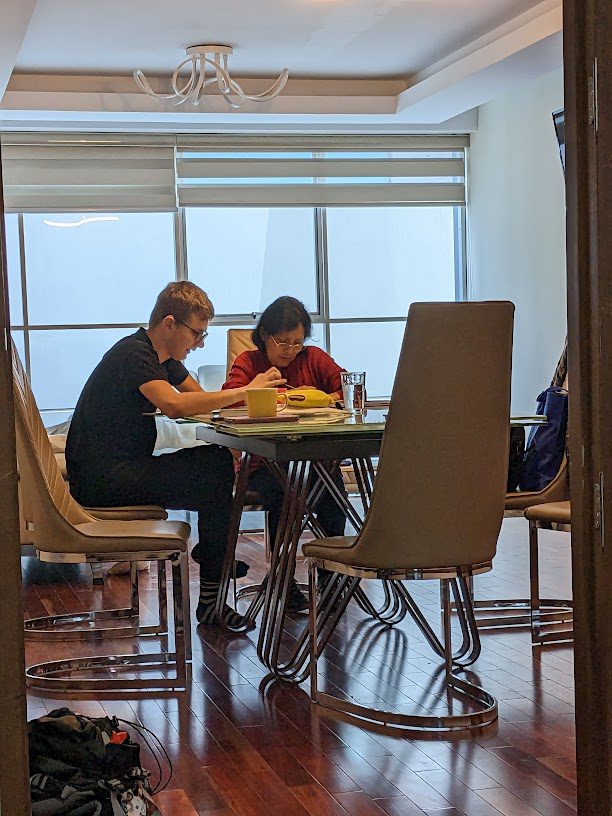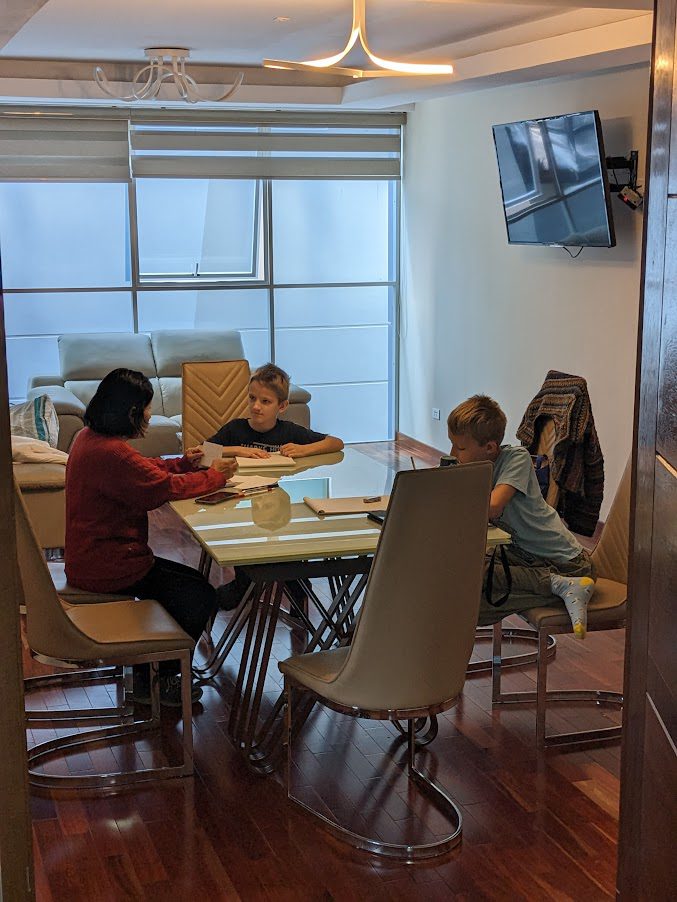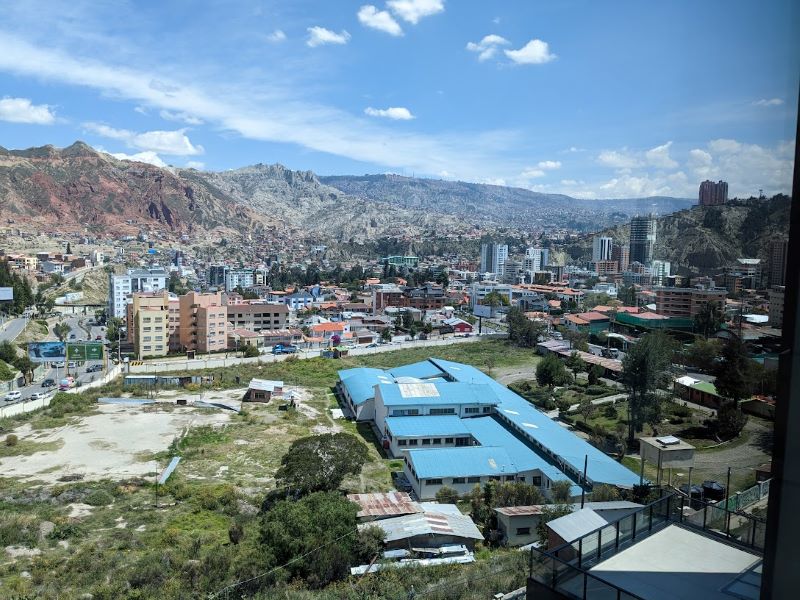Greetings from two miles above sea level in La Paz, Bolivia!
We landed here a couple of days ago and have collectively only suffered 6 nosebleeds from the altitude, which is thankfully a half mile lower than the airport. (“El Alto” is the highest airport in the world!) When we first arrived, walking up a very slight slope was a challenge and most of us had headaches. We’re beginning to adapt, though, and I hope to make an easy jog around town tomorrow morning.
No complaints, though: La Paz is one of the most beautiful cities in the world, with skyscrapers nestled in a valley of mountains across the perimeter of the city. That beauty is one of several reasons why, at 12 days and 11 nights, this will be the longest stop of the trip.
The second reason is that I have great friends: Kim and Brian, who live in the Bay Area, own an apartment here they use when visiting Brian’s family and they were kind enough to offer it up for our use while here. After more than a few nights shared in a single “family” hostel room, we’ve all been overjoyed to spread out in this three-bedroom, three-bath refuge. The view of the city at the top of this post is from our master bedroom. Thanks Kim and Brian! (Kim was also instrumental in helping me secure my Bolivian visa by crafting a very nice letter in Spanish that helped the border guards believe I should be allowed into the country.)
Stopping for Studies
The final reason we’re staying so long in La Paz is that the boys need to do more schoolwork. They’ve been dutifully working through online lessons whenever we ask them to, but have frequently been foiled by slow Wi-Fi in many of the places we’ve tried to pause. Not a problem here! (I’m assuming the fact that Brian is a fellow electrical engineer has something to do with this.)
Each of them has been spending about three hours a day on online schoolwork, but that actually isn’t the main learning we’re prioritizing here. The “nadie no habla” in the title above means “no one does not speak” and is in reference to the fact that all three boys are studying Spanish here.


Henry is trying to replace the 3rd-year Spanish class he would have taken as a high school student, so is doing three hours per day one-on-one with Mery, the fantastic “maestra” I found here after a little bit of Googling and WhatsApping. James and Charlie had very little existing Spanish knowledge, so are doing two hours a day together, which Mery makes a lot of fun with explorations of household items and games like the one today where they had to run, jump, walk, or sit depending on what she said in Spanish.
Me speaking Spanish
I had the idea for in-person one-on-one instruction because it’s something I did when I visited Ecuador in 2002. You might think that the 3o hours of instruction Henry is getting over these two weeks wouldn’t compare to a year in the classroom, but I found that a similar amount of time was easily better than my year of community college Spanish lessons before my pre-business school trip to South America. I’m proud of the work the boys are putting in because “intensive” instruction really is intense, and they’re definitely earning their relaxation time at the end of every day. (I’m also proud of how independent they’re becoming from this whole “travel around the world” thing, but that probably deserves a whole new post.)
As I claim above, my Spanish skills were pretty good after those couple of weeks in Quito, but after over 20 years of almost no use, I’m frustratingly rusty. Pretty much no one speaks English anywhere we’ve been since we landed in Chile three weeks ago, so as the sole Spanish speaker in the family I’ve been gradually climbing back in the saddle. Reading is the easiest because context frequently lets me remember words I used to know, and I can ask for most things, sometimes with a quick Google Translate check to make sure I know the word. Understanding responses is the hardest, though, especially because pronounciations are “unusual” in Chile and Argentina. I’ve found it easier to understand people here in Bolivia, but that’s probably partially because I’ve been working on it for a few weeks.
Karen’s and my work
In addition to helping the boys with school–me mostly with Math, and Karen very patiently with James and his blog–we’ve also been taking advantage of the respite from constant motion and travel planning. Karen is going to spend some time on grad school plans while still pursuing her goal of reading 100 books this year. (My super cool wife is currently at 30 for the year! And she looks beautiful in her new reading glasses!)
I’m planning to spend more time thinking about and researching the kinds of work I’d like to do after we’re back home this summer. If you’re reading this and you have any great ideas or leads for me, please reach out and let me know! We’re on US East Coast time right now, so phone calls are pretty easy too.
Finally, I’m hoping to send out another blog post or two in the next couple of weeks after finding it very hard to squeeze into travel life. (That’s still a hope, so the best way to follow along with our current travels continues to be Instagram/Facebook, which you can see linked to this page.)
Happy Easter, or Semana Santa as they say here! Also, Chag Sameach! And Ramadan Mubarak! It’s a special time of year for many people around the world and my family is happy to be enjoying it from here in La Paz. Wherever you’re reading this espero que estés bien y disfrutando de la vida.
P.S. I cover that 2002 trip in my book, an excerpt of which you can find here.
